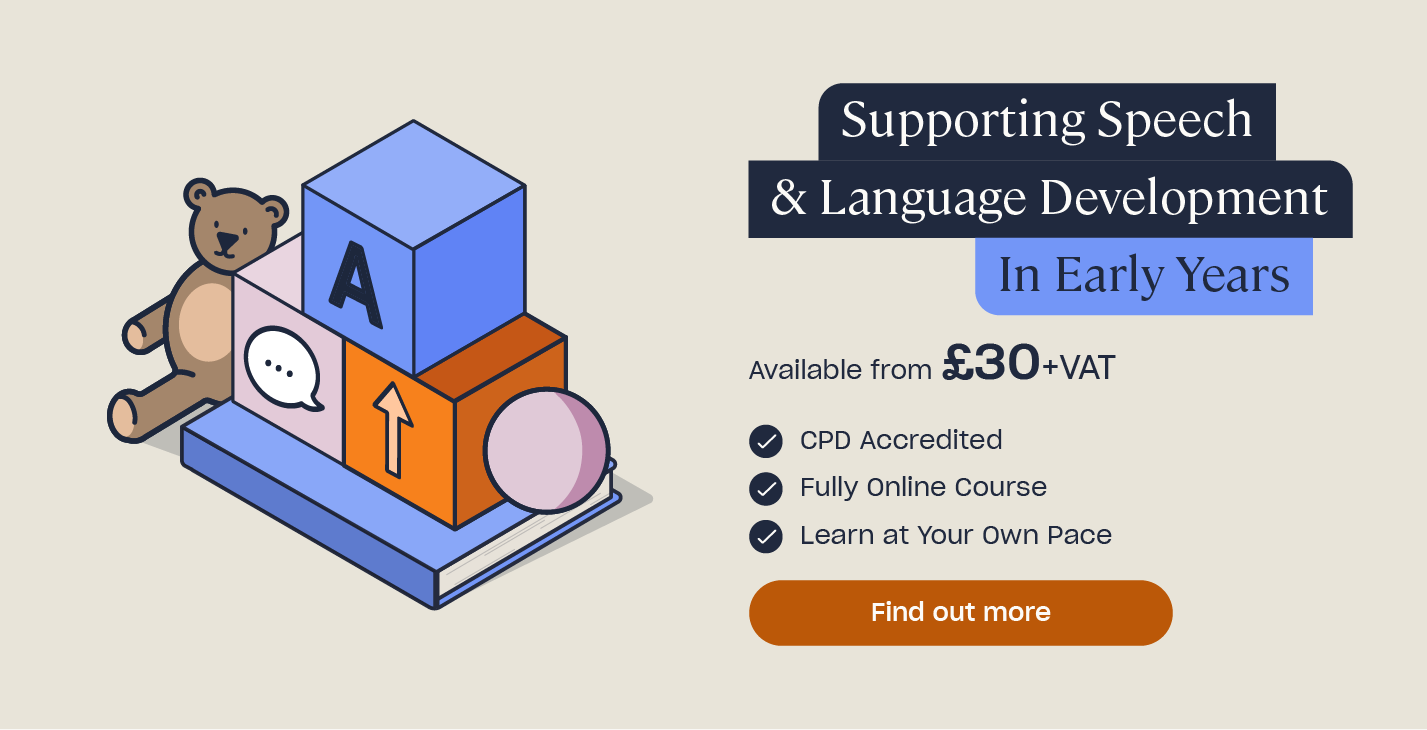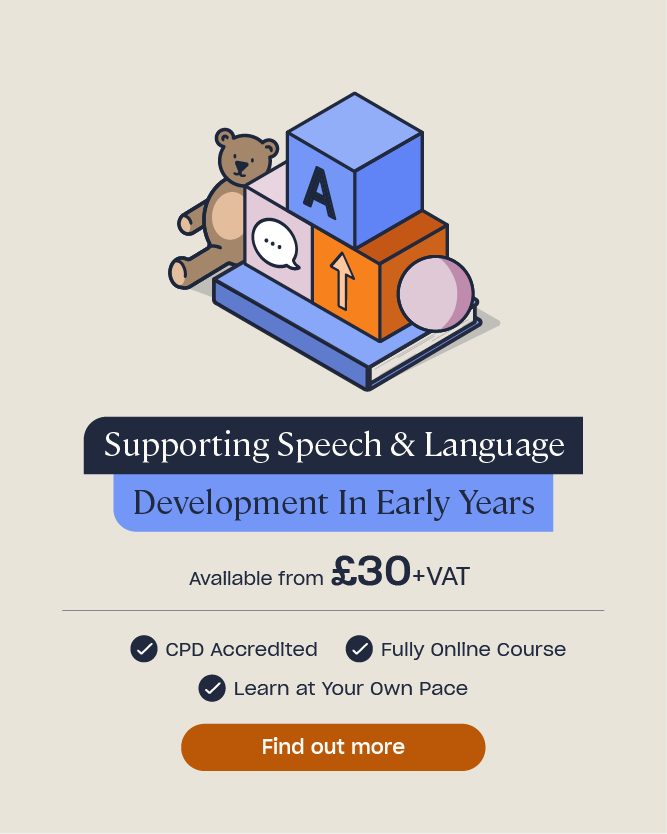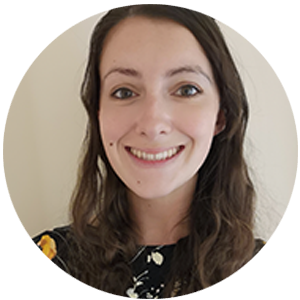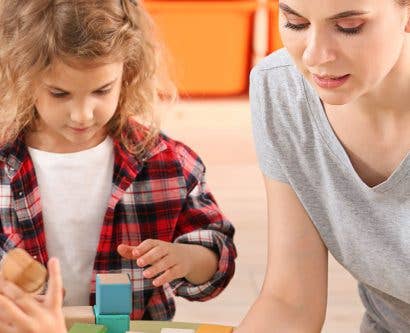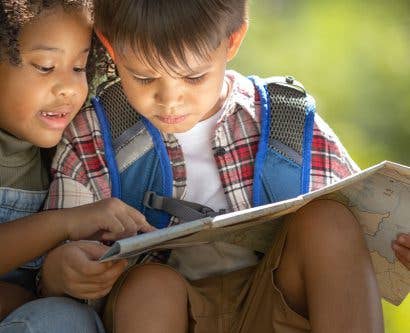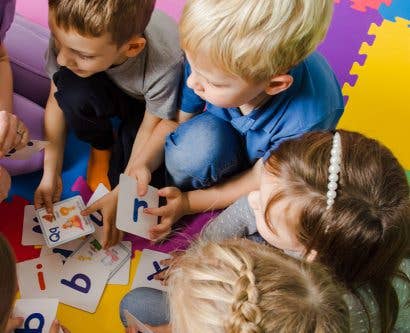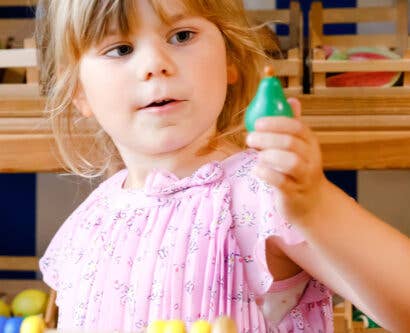Supporting Language Development in the Early Years
Speech, language, and communication are critical areas of development for children. They play a vital role throughout our lives, helping us to understand what is going on around us, communicate our basic needs and feelings, hold conversations, think and learn, develop relationships, solve problems, and more. They also support many other aspects of development, including cognitive, social, and literacy development.
Research has found, however, that in some areas, more than 50% of children entering reception have language levels below what is expected for their age. Since the beginning of the COVID-19 pandemic, this statistic has likely worsened as language development has regressed for many children, leaving them behind their peers.
Both parents and early years workers could play a significant role in helping to improve children’s language development and outcomes. To aid you in doing this, in this article we will cover the stages of normal language development, why it is so important, how to recognise potential speech problems, and what you can do to support young children’s language.
The contents of this article are as follows:
- What Does Normal Language Development in Early Childhood Look Like?
- Why is Speech and Language Development Important?
- How Do I Recognise Speech Disorders in Children?
- Strategies to Support Language Development
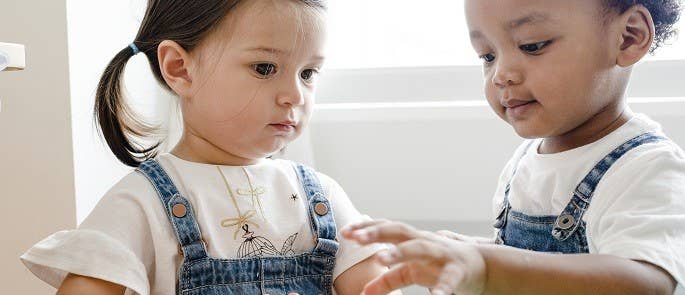
What Does Normal Language Development in Early Childhood Look Like?
Speech and language development involves four main components:
- Phonetics and phonology: learning to pronounce speech sounds, as well as understanding the rules about which sound sequences occur in the language.
- Semantics: learning vocabulary and understanding how concepts map onto words – for example, does ‘dad’ mean any man? Or any man with a beard? Or just one particular man?
- Syntax and morphology: the rules for how to arrange words in sentences (for example, a verb normally comes second, rather than last), and how to change things like tense, voice, or number – for example, is the plural of ‘sheep’ ‘sheeps’?
- Pragmatics: learning social rules for using language, including adapting your language for who you’re talking to, taking it in turns to speak, and staying on topic. This also includes learning non-verbal communication – including facial expressions, gestures, and tone of voice – and how this interacts with the words we’re saying.
As you can see, learning how to communicate is quite complicated. The good news is that children are programmed to be able to do it, but they do need lots of input from adults to be able to kickstart this process. This also needs to be direct, face-to-face input from a real human being; children can’t learn language effectively from TV or computer games, even if they are ‘educational’ (Kuhl, 2007 and others). As a result, the more you talk to a child (or baby) and support their language, the more progress they will make.
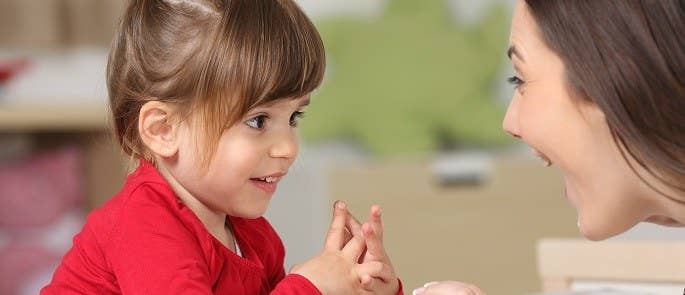
We use milestones to get a sense of what normal language development looks like – this is a more accurate way of measuring than attempting to compare one child with another, because all children are different. Understanding each milestone of development will help you to choose the right strategies to support a child with their speech and language.
Ages and Stages of Language Development
Babies start learning to recognise language even while they’re in the womb. Research has shown that they remember stories that they were read while they were in utero, as well as recognising their mother’s voice (DeCasper and Fifer, 1980, 1986; Kisilevsky et al., 2003).
Once they’re born, their development tends to progress through the following stages:
| Age | Characteristics of Stage |
|---|---|
| 3-12 months | Cooing, smiling, and laughing Playing with sounds – babbling (e.g. da, da, da) Communicating with gestures like waving and pointing Sounding like they’re talking, but not using recognisable words |
| 12-18 months | Saying their first words with meaning – for example, saying ‘mama’ to call for their mum Understanding many more words than they can say, including instructions like ‘sit down’ Mostly using nouns in their speech, such as ‘car’ or ‘duck’ By 18 months, using between 50 to 150 words |
| 18 months to 2 years | Combining words in telegraphic speech (e.g. ‘me go’, ‘dada throw ball’) Using simple pronouns (‘me’, ‘I’, and ‘you’), but often confusing ‘me’ and ‘I’ Naming objects that they see regularly Responding to simple commands like ‘pick up your coat’ |
| 2-3 years | Beginning to say longer sentences of three or four words Using some plurals and past tenses Talking about what they’re doing as they do it Conversation skills improve – they respond to you more often |
| 3-4 years | Speaking more clearly – strangers can mostly understand them Asking ‘who’, ‘what’, and ‘why’ questions |
| 4-5 years | Using more complex sentences with words like ‘because’, ‘if’, ‘and’, or ‘when’ Telling stories and simple jokes Being able to answer questions about stories Being able to follow requests |
We have only mentioned a few aspects of each stage here – for a more detailed list, see our article ‘Why is Child Development So Important in Early Years?’ or take our course on Supporting Speech and Language Development in Early Years.

Communication and Language in the EYFS
If you are an early years worker, you can also use the Early Years Foundation Stages (EYFS) to measure a child or baby’s development. The early learning goals for communication and language are:
- Listening and attention – including the ability to discriminate sounds and maintain and monitor attention in a shared context, and being able to anticipate key events in stories.
- Understanding – first words in context, then phrases, and gradually more complex sentences, as well as questions like ‘how’ and ‘why’.
- Speaking – being able to express their feelings, needs, wants, thoughts, ideas, past experiences, and pretend play events.
Children are expected to achieve these goals when they have turned five years old. Ofsted inspectors will check to see whether early years practitioners are using adequate strategies to help children develop their communication and language skills. We will provide some ideas of strategies you can use later in this article.
Back to Top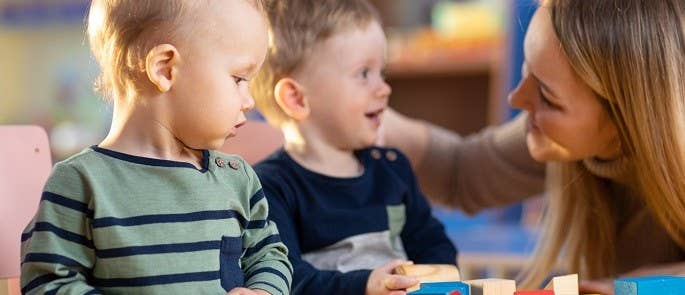
Why is Speech and Language Development Important?
We have already mentioned that speech and language development is vital in a child’s life, but a more detailed list of the benefits associated with it includes:
- Providing a foundation that they can build on at school. Children need to develop their speech and language before they can learn to read, and language is the main way that information is transferred from teachers to students, learnt, and understood.
- As a result of the above, children’s early vocabulary is a predictor of their later educational outcomes, particularly reading comprehension and decoding (e.g. Bleses, Makransky, Dale, Højen, & Ari, 2016). Smaller vocabulary sizes in the early years lead to worse academic performance later on.
- Language development is hugely important for children’s overall development – for example, it supports cognitive advancement.
- It helps children to form friendships. Using language facilitates them having meaningful interactions with those around them.
- It enables them to communicate their needs better, reducing frustration (and, in turn, tantrums or outbursts).
- Children are able to make more sense of the world around them. Language is tied to our thoughts and the way we perceive the world – when we are able to describe what is going on around us in words, this helps us to understand it.
As a result, it is important to do whatever you can to help the children and babies in your care to improve their communication and language skills.
Want to learn more?
Our course on Supporting Speech and Language Development in Early Years explains what typical development in this area looks like, discussing a range of support strategies approved by speech and language therapists, and going into detail about speech, language, and communication needs – including what causes them, warning signs, and how to help children who you know or suspect might have them. Have a look at our course library to see this and other courses that we offer.

How Do I Recognise Speech Disorders in Children?
As with all types of development, things can go wrong when children are learning to communicate. This could be due to difficulties with learning, cognition, hearing, or sight, or a poor learning environment with little interaction with adults. In this section, we will describe the different types of language problems, their symptoms, and what you should do if you suspect a problem.
Types of Language Problems
Children might experience any of the following issues:
- Language delay – where they are developing along the normal lines, but are slightly behind the average in achieving each milestone. This is the most common developmental delay in children, and more than half of language delays in children under three resolve themselves.
- Developmental Language Disorder – where they have problems either understanding language (receptive language delay) and/or using words themselves (expressive language delay). This might be misdiagnosed as poor behaviour, poor listening, or inattention.
- Speech sound problems – where children find it difficult to produce a certain sound – for example saying ‘wadio’ instead of ‘radio’ (articulation disorder) – or they make a pattern of sound mistakes, such as consistently saying only one syllable in a word, like ‘bay’ for ‘baby’, or changing certain consonants in lots of different words, such as ‘tat’ for ‘cat’ and ‘toffee’ for ‘coffee’ (phonological process disorder).
- Fluency – where children stutter or stammer. This might happen at the beginning of a word, such as ‘li-li-like’, could involve speech having to completely stop, or could be the repeated interruption of speech with ‘um’ or ‘uh’. Children under five quite often stutter as they’re learning to speak, and this comes and goes. However, one in five children have a stutter that is more severe.
- Attention and listening problems – where children are unable to concentrate on speech and filter out background noise effectively, leading to them ignoring speech, interrupting, or being easily distracted.
Being aware of the different types of language problems will help you to communicate the problem to a professional, if necessary, as well as giving you an idea of how you can help in the meantime.
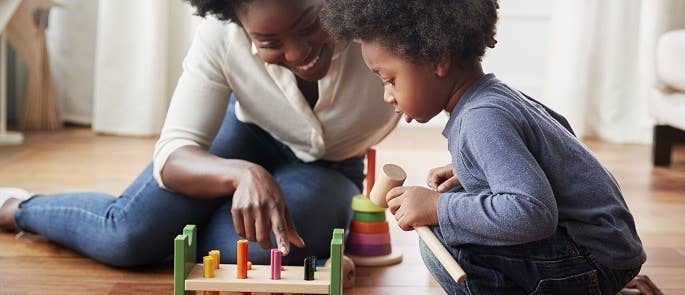
Symptoms of Language Problems
Symptoms that could indicate a language problem include:
- Lack of attention when being spoken to – easily distracted.
- Failing to carry out simple tasks or instructions (when old enough to understand these instructions).
- Poor eye contact.
- Speech that is extremely difficult to understand – only comprehensible 50% of the time.
- Uninterested in being read to.
- Repeating the same thing over and over again.
- Avoiding conversations.
- Consistently making speech sound errors over a long period of time.
- Not speaking at all by 18 months of age, or not understanding speech by this age.
- Not recognising or labelling common objects.
- Difficulty learning nursery rhymes or simple songs.
It is not always a problem if children do not meet milestones ‘on time’ – there is a huge range within normal development. However, if you are worried that a child is behind where they should be, making a list of when they do achieve each milestone will help you see whether there is a pattern.
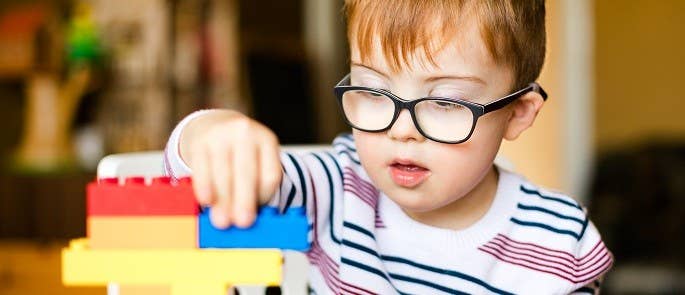
Be aware that language development will be slightly different for English as an Additional Language (EAL) children. Having less exposure to English will mean that they develop more slowly – they are not necessarily delayed, they just haven’t heard enough of the language to learn it yet. Learn how to support EAL students in the classroom here.
What Should I Do if I Suspect a Problem?
It’s important to act if you suspect a language problem, because delayed language development can cause frustration for you and the child, as well as difficulties learning and making friends, and behavioural problems. On the other hand, early intervention can be extremely helpful and mitigate any effects of the delay or disorder.
If you are worried about a child’s language development, the first step is to talk to your GP – if you are not the child’s parent, you may wish to tell the parents your concerns and suggest that they book an appointment. You don’t need to try and diagnose the problem that the child is experiencing, but giving the GP or parents an idea of the symptoms would be useful.
The GP will refer the child to a speech and language therapist, if necessary. The speech and language therapist can decide what can be done to help, and what the potential for change is (their speech therapy goals). They might give parents exercises to do with the child, or have one-to-one sessions with them.

There are often long waiting times for intervention, so in the meantime it’s important that you use all the strategies we will list in the next section to ensure that the child has as much support as they possibly can. Try to understand the problem thoroughly so that you can be empathic and make it easier for the child.
Back to TopStrategies to Support Language Development
We have put together eight strategies that you can use to encourage children to develop their language. You may already use some of these strategies, or may need to change what you are doing slightly to maximise the learning opportunities you give to the children and babies around you. Whatever you can do will be helpful in giving them the best outcomes possible.
1. Be a Good Role Model
Since children often learn by observing and copying adults, you need to ensure that you are modelling good speech and language skills as much as possible, including:
- Speaking slowly, so that children have time to process the information you give them, as well as clearly and calmly.
- Using short sentences so that they aren’t overwhelmed with language
- Making eye contact, getting down to the child’s level if necessary.
- Modelling the right pronunciation and sentence structure, making sure to enunciate each word and sound – for example, it helps children learning to speak if you say ‘going to’ rather than ‘gonna’.
- Not using ‘baby words’ – children will need to learn the adult version from somewhere, and if you model it for them, they’ll learn it more quickly.
- Labelling objects and actions around you to teach them more vocabulary – for example, ‘look at that dog!’.
- Listening carefully when children are talking to you – give them your full attention.
- Not interrupting when they are speaking.
- Giving them opportunities to respond by leaving pauses after your sentences – this helps them learn turn-taking in conversations, but also gives them time to think and anticipate your next sentence.
- Making signs, gestures, or actions as you speak to help convey your meaning.
- Using expressive language to discuss objects, actions, and emotions – for example, ‘that’s a beautiful picture!’, ‘look at that tall tower!’. This will help children to expand their vocabularies.
Being a good role model only requires you to adapt your behaviour slightly, and can have extremely rewarding results.

2. Read to Them
Reading in early years is extremely effective for language development – it also has many other benefits, as you can find out in our article ‘Why is Reading Important for Children?’. Try to read books every day if you can – it is even useful for babies under six months, but is particularly effective as they get older.
When you read, point to the words as you say them. This helps the children link the spoken word to the written word, and will aid their literacy development later on. Talk about each page to encourage the child to speak – for example, you could say ‘that’s a lot of food – what’s your favourite food?’.
Engage them in the book by using intonation, pointing to pictures, and letting the child guess what will happen next. Toddlers might want you to read them the same book over and over again – this is great for getting them to really absorb the language, and testing whether they can finish the sentences for you. Alongside their favourites, read children books on different topics, particularly as they get older, so that they broaden their vocabularies. Talk about words that they aren’t familiar with, asking them if they know what it means, and explaining it if not.

3. Talk Together
Naturally, talking to a child as much as you can will assist their language development. It’s important to talk to them even when they can’t talk to you – from birth, you should chat about what you’re doing and ask them questions, responding to any gestures or noises they make as if they’ve spoken a sentence. This teaches them how conversations work, and exposes them to lots of vocabulary and sentence structures to become familiar with.
To make your conversations even more impactful, think about:
- Talking to infants in a singsong, high-pitched voice. They are more likely to tune into this and listen to what you’re saying, thus accelerating their language development.
- Addressing them by name to get their attention before you speak (and teach them their name!).
- Expanding what children say by repeating and building on it. For example, if they say ‘car’, you could say ‘yes, look at that red car over there’. Giving the child complete sentences helps them to learn more about grammar.
- Using parallel talk and self-talk. Parallel talk involves talking about what the child is doing – for example, ‘you are wearing a nice blue dress today’ or ‘you are playing with the toy giraffe’. Self-talk involves talking about what you are doing, such as ‘I am tidying up the toys because it’s almost time to go home’. This helps teach children to pay attention to cues and predict what will happen next.
- Being positive. If children make an error with their language, you should still say ‘well done’ or ‘yes’ – it takes a lot of effort to learn to talk, and they will need lots of encouragement. You can then repeat what they said, correcting the error; they will learn gradually by hearing you produce the correct forms. For example, if a child says ‘her got dog’, you could say ‘yes, she has a dog’.
- Choosing topics to work on each half-term. Some vocabulary will come up naturally in conversation, but by choosing a topic (such as daily routines, animals, body parts, food and drink, or colours) you could teach children even more words! The repetition of the same topic over a number of weeks will also make it more memorable.
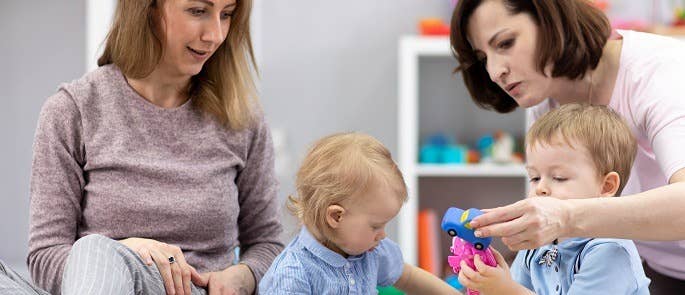
4. Sing with Them
Singing is particularly important for babies and younger children – it can really help their language development by supporting them in differentiating sounds, recognising rhymes, improving their memories, and broadening their vocabularies. Just as with reading, pause before the end of a song line, getting the children to fill in the gap – for example, ‘twinkle, twinkle, little… (star)’.
You could make up your own songs, or ask older children to do so. If they’re silly, the children might enjoy and remember them even more!
5. Play Describing, Guessing, and Turn-Taking Games
Games are great language activities that you can try out. You could try:
- Getting the children to feel a hidden object and describe it so that the others can guess what it is.
- Playing ‘what am I?’, where you describe an object and the children have to guess it – for example, ‘I have four legs and I’m a pet, I like to bark’.
- Playing I Spy.
- Sitting in a circle and taking it in turns to pass something around, only speaking when it’s your turn. You could get everyone to answer a question (such as ‘what is your favourite food?’) this way. It also helps to build attention and listening skills, which are vital to good communication.
- Asking children to wait until you say ‘go’ to do something, such as knock down a tower or make lots of noise. Again, this improves their attention and listening skills.
There are also lots of other games that could be just as fun as these suggestions – see what you can come up with!

6. Encourage Pretend Play
Pretend play helps children to broaden their vocabularies – you could get them to dress up as characters from their favourite book, make up their own stories, or try role-play using some simple props.
During the play, encourage the child to name the objects that they’re using and ask them questions like ‘what are you doing now?’, ‘where’s teddy’s hat?’. You could give them simple instructions within the play, such as ‘put teddy down’, making them more complicated for older children (‘make your dolly sit on the chair’).
7. Explore Rhymes
Rhymes are key for language development, just like singing. In addition to helping children to differentiate sounds and learn more words, rhymes increase phonological awareness skills and prepare children for learning to read.
You could play games – such as coming up with a word that the children have to find lots of rhymes with – or make up poems together. Reading rhyming stories is another good way to incorporate it into everyday life.
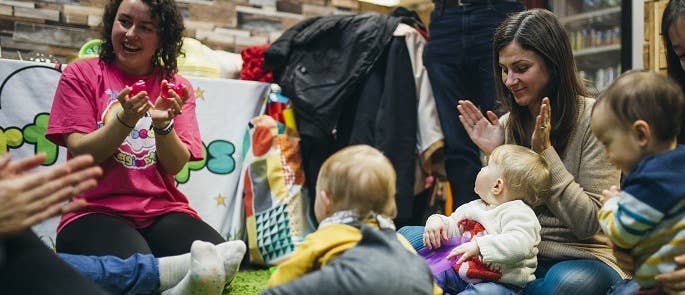
8. Create a Language-Rich Environment
To maximise opportunities for language development, ensure that the environment around you is conducive to good communication. This means:
- Keeping it organised and uncluttered. Research has shown that tidy rooms help children to learn better.
- Having displays on the walls that are colourful, include words, and are interesting to look at (but not overwhelming). This is useful for older children who might be beginning to match the spoken word with the written word.
- Having plenty of books available that are age-appropriate and appealing.
- Ensuring it isn’t too noisy or there are ‘quiet spaces’ available. To develop communication skills, children need to be able to hear properly – you could use tents or dens to create areas where children could talk to each other, as well as making sure the general volume isn’t too high when you have conversations.
We hope that these eight strategies will give you a good starting point for supporting language development.
Back to TopLanguage development in the early years is crucial for children’s outcomes later on – by using supportive language strategies and learning to recognise potential problems, you can help them to achieve the best outcomes possible. We hope you have found this article helpful!
Further Resources:
- How to Support Children With Speech, Language, and Communication Needs
- Supporting Speech & Language Development In Early Years Course
- Why is Reading Important for Children?
- Promoting Social Development in Children Through Structured Group Play
- Curiosity Approach in Early Years: Importance and Ideas
- Education Training Courses
- Child Development in Early Years
- How to Encourage Children to Express Feelings & Emotions
- Promoting Positive Behaviour in Early Years: A Guide for Nurseries
- Child Development Quiz
- Benefits of Role Play in Early Years: Advice for Teachers


